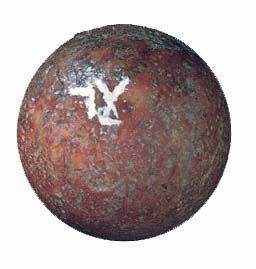Image Details

Courtesy William Dever
With the discovery of a pym weight—a fraction of a skekel weight such as the one shown here—the word is now known to refer not to a file but to the fee charged for the smith’s services. Accordingly, the Revised Standard Version translation of the passage from Samuel reads: “ … but every one of the Israelites went down to the Philistines to sharpen his plowshare, his mattock, his axe, or his sickle; and the charge was a pim for the plowshares and for the mattocks, and a third of a shekel for sharpening the axes and for setting the goads.”
William Dever sees the pym as just one of hundreds of details in the Bible dovetailing with what we know of life during Israel’s monarchical period (late 11th–early 6th centuries B.C.E.). In arguing against a very late date for the composition of the Bible, Dever asks, “Is it possible that a writer in the second century B.C.E. could have known of the existence of these pym weights, which occur only in the ninth to the seventh century B.C.E. and would have disappeared for five centuries before his time? It is not possible.”
